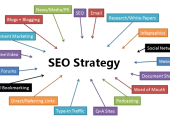Conversion rates on a website are pivotal for driving success, measuring the percentage of visitors who take specific actions like making a purchase or completing a form. Elevating this rate can significantly impact your business’s profitability. Conversion rate is the percentage of website visitors who take a desired action, such as purchasing or filling out a form. Increasing your conversion rate can significantly impact your business’s bottom line.
Various factors can impact your conversions on your website, including the design and layout of your site, the quality of your content, and the ease of navigation. You can increase your revenue by improving your conversion rate.
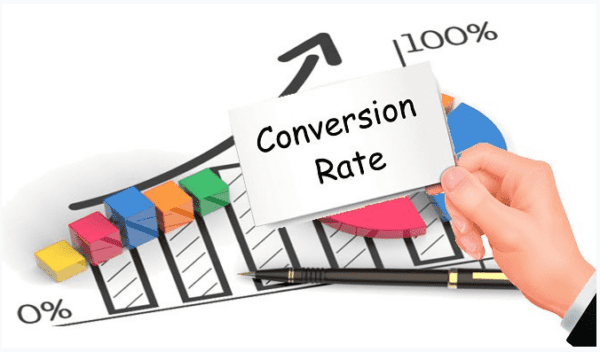
Understanding Conversion Rates
Conversions are like the scorecard for any website or online biz. It tells you the percentage of visitors who do something you want, like buy goods, sign up, or fill out forms. Knowing this number is gold because it helps you fine-tune your site and boost your profits.
To figure out your conversion rate, do some simple math. Divide the number of actions people take on your site by the total number of visitors, then multiply that by 100. For instance, if you had 1000 visitors and 50 made a purchase, your conversion rate would be 5%.
A high conversion rate means your website rocks at getting folks to act. But a low one signals trouble—maybe your design, message, or how easy it is to use the site needs work.
Several factors can influence this, including:
- The quality of your website’s design and user experience
- The relevance and clarity of your messaging
- The ease of use of your website’s forms and checkout process
- The level of trust and credibility associated with your brand
The Importance of Conversion Rates
The number of conversions on your website is a big deal. It’s the percentage of visitors who do something you want, whether buying, signing up, or filling out forms. Having a high conversion rate is a game-changer. It means your website’s great at turning visitors into customers or leads. That helps you reach your goals: boosting revenue, getting more information, or making your brand shine.

But here’s the cool part: a high conversion rate isn’t just good for bringing in business. It also makes search engines like Google think highly of your site. They dig websites where people take action—it tells them your content rocks, and users love what you offer. Plus, it can save you bucks on ads. With better conversions, each click or view you pay for in ads gives you more bang for your buck. So yeah, nailing that high rate is a pretty sweet deal.
Website Design and Conversion Rate
Your website’s design can significantly impact your conversion rate, attracting visitors and encouraging them to stay and engage with your content. On the other hand, a poorly designed website can drive visitors away, resulting in a minimum to zero conversions. Three essential design elements can affect your website’s ability to convert visitors into paying customers.
Visual Appeal
Your website’s visual appeal can significantly impact your conversion rate. This can create a positive first impression and encourage visitors to explore your website further. Some design elements that can enhance your website’s visual appeal include:
- High-quality images and videos
- A clean and organized layout
- A consistent colour scheme
- Clear and readable text
Ease of Navigation
Your website’s navigation can affect how easily visitors find what they want. Visitors may become frustrated and leave your website if it is challenging to navigate. Some design elements that can improve your website’s navigation include:
- A clear and concise menu
- A search bar for easy access to specific content
- A breadcrumb trail to help visitors understand where they are on your website
- A sitemap for a comprehensive overview of your website’s content

Mobile Responsiveness
With more and more people accessing the internet from mobile devices, it’s essential to have a mobile-responsive website. A mobile-responsive website adapts to different screen sizes, making it easy to navigate on any device. Some design elements that can improve your website’s mobile responsiveness include:
- A responsive layout that adjusts to different screen sizes
- Large and readable text
- Clear and concise navigation
- Easy-to-use forms that are optimized for mobile devices

Website Content and Conversion Rate
Here, the quality and relevance of your content play a crucial role. In this section, we’ll explore how the content on your website impacts your conversions and how you can improve it.
Quality of Content
The quality of your content is critical in determining whether visitors will stay on your site and ultimately convert. High-quality content is engaging, informative, and well-written. It should provide value to your audience and answer any questions they may have.
To improve the quality of your content, consider the following tips:
- Conduct thorough research on your topic to ensure you’re providing accurate and up-to-date information.
- Use clear and concise language that is easy to understand.
- Include relevant images and videos to make your content more visually appealing.
- Organize your content into sections or subheadings to make it easier to read.
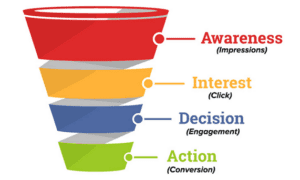
Relevance of Content
In addition to quality, your content’s relevance is crucial in determining whether visitors will convert. Relevance refers to how well your content aligns with the needs and interests of your target audience.
To improve the relevance of your content, consider the following tips:
- Conduct market research to understand your target audience’s needs and interests.
- Use targeted keywords to improve your search engine rankings and attract exemplary visitors.
- Create content that addresses your audience’s pain points or solves their problems.
- Use personalization tactics, such as dynamic content or product recommendations, to make your content more relevant to individual visitors.
Website Speed and Conversion Rate
The speed of your website can have a significant impact on conversions. Slow-loading pages can frustrate visitors and cause them to leave before completing a purchase or filling out a form, translating to a high bounce rate. Research has shown that a one-second delay in page load time can result in a 7% reduction in conversions.
To ensure that your website is loading quickly, you should consider the following strategies:
- Optimize images: Large images can slow down your website’s load time. Compress images and use the appropriate file format (JPEG for photos, PNG for graphics).
- Minimize HTTP requests: Each element on your website (images, scripts, stylesheets) requires an HTTP request, which can slow down load time. Minimize the number of requests by combining files and removing unnecessary elements.
- Enable caching: Caching allows your website to store commonly used files on a visitor’s computer, reducing load time for subsequent visits.
- Use a content delivery network (CDN): A CDN stores your website’s files on servers worldwide, allowing visitors to access them from the server closest to them. This can significantly reduce load time for visitors in different regions.
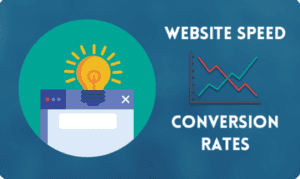
Conversion Rate Optimization Strategies
When it comes to optimizing your website’s conversion rate, there are various strategies that you can employ. Two of the most effective strategies are A/B testing and user experience enhancement.
A/B Testing
A/B testing involves creating and testing two web page versions against each other to see which performs better. This can include testing headlines, calls to action, images, etc. By analyzing the results of your A/B tests, you can identify which elements of your website are most effective at driving conversions and make changes accordingly.
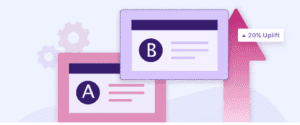
User Experience Enhancement
Improving the user experience of your website can also have a significant impact on your conversion rate. This can involve optimizing your website’s load times, simplifying your checkout process, and ensuring your website is easy to navigate. Creating an intuitive and user-friendly website makes converting visitors into customers easier.

Measuring Conversion Rate
As a website owner, measuring your conversion rate is essential to understand how well your website performs to achieve your business goals. Conversions are the percentage of visitors that take a desired action on your website, such as purchasing, filling out a form, or signing up for a newsletter.
Google Analytics
Google Analytics is a free tool that tracks and measures your website’s performance. It provides valuable insights into your website’s traffic, user behaviour, and conversions. You need to set up conversion tracking to measure your conversion rate in Google Analytics.
Conversion tracking in Google Analytics involves setting goals, which are specific actions you want visitors to take on your website. For example, if you want visitors to make a purchase, you can set up a goal for completing the checkout process. Once you set your goals, you can track how many visitors end them and calculate your conversion rate.
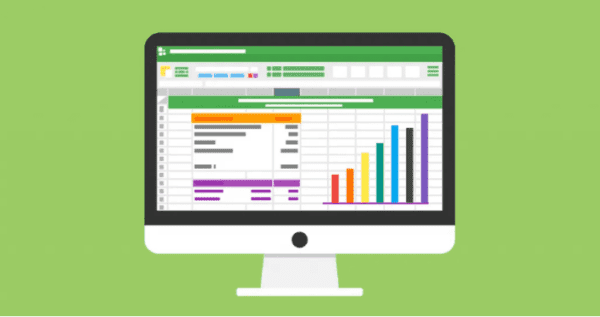
Conversion Rate Metrics
You can track several conversion rate metrics to measure your website’s performance. These include:
- Conversion Rate: The percentage of visitors who complete a desired action on your website.
- Bounce Rate: The percentage of visitors who leave your website after viewing only one page.
- Exit Rate: The percentage of visitors who leave your website from a specific page.
- Average Session Duration: The average time visitors spend on your website.
Improving Conversions: Case Studies
Boosting your website’s conversion rate might feel challenging, but it’s doable. Many businesses have upped their conversions with a few straightforward tweaks. Here are some real-life examples to spark your inspiration:
Case Study 1: Company X
Company X struggled with a low conversion rate despite a decent flow of visitors. They revamped their website’s design and content, keeping it simple:
They also streamlined the homepage design for better looks and more accessible navigation, added customer testimonials on product pages for more credibility, and provided detailed product descriptions to aid customer decision-making
Results? Company X’s conversions soared with a whopping 20% increase.
Case Study 2: Company Y
Company Y battled with visitor conversions and decided to try a live chat feature on their website:
Visitors engaging with the live chat were three times more likely to convert. Customers who used live chat had a 30% higher average order value.
With these findings, Company Y kept the live chat and saw a solid 25% hike in their conversion rate.
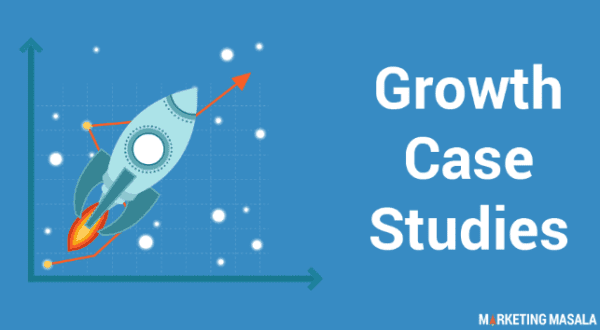
Case Study 3: Company Z
Company Z faced a high bounce rate on their landing pages and tried A/B testing for a conversion boost:
They changed the headline for better attention-grabbing, simplified the page design for a cleaner look, and added a call-to-action button up front.
Results? Company Z celebrated a 15% spike in their conversions.
These success stories show how simple changes, like those by Companies X, Y, and Z, can powerfully lift your website’s conversions.
image source
Conclusion
Enhancing your website’s conversion rate is vital for online business success. Optimizing design, content, and user experience increases the likelihood of visitor actions like purchases or form submissions. A/B testing is a potent tool, allowing testing of site variations for data-backed decisions, continually enhancing conversions. Mobile-friendliness is vital, given increased mobile web usage. Incorporating social proof, clear calls-to-action, and minimizing distractions further bolsters trust and conversions. By prioritizing testing, optimization, and user experience, following these strategies significantly boosts conversions and fosters online business growth.





